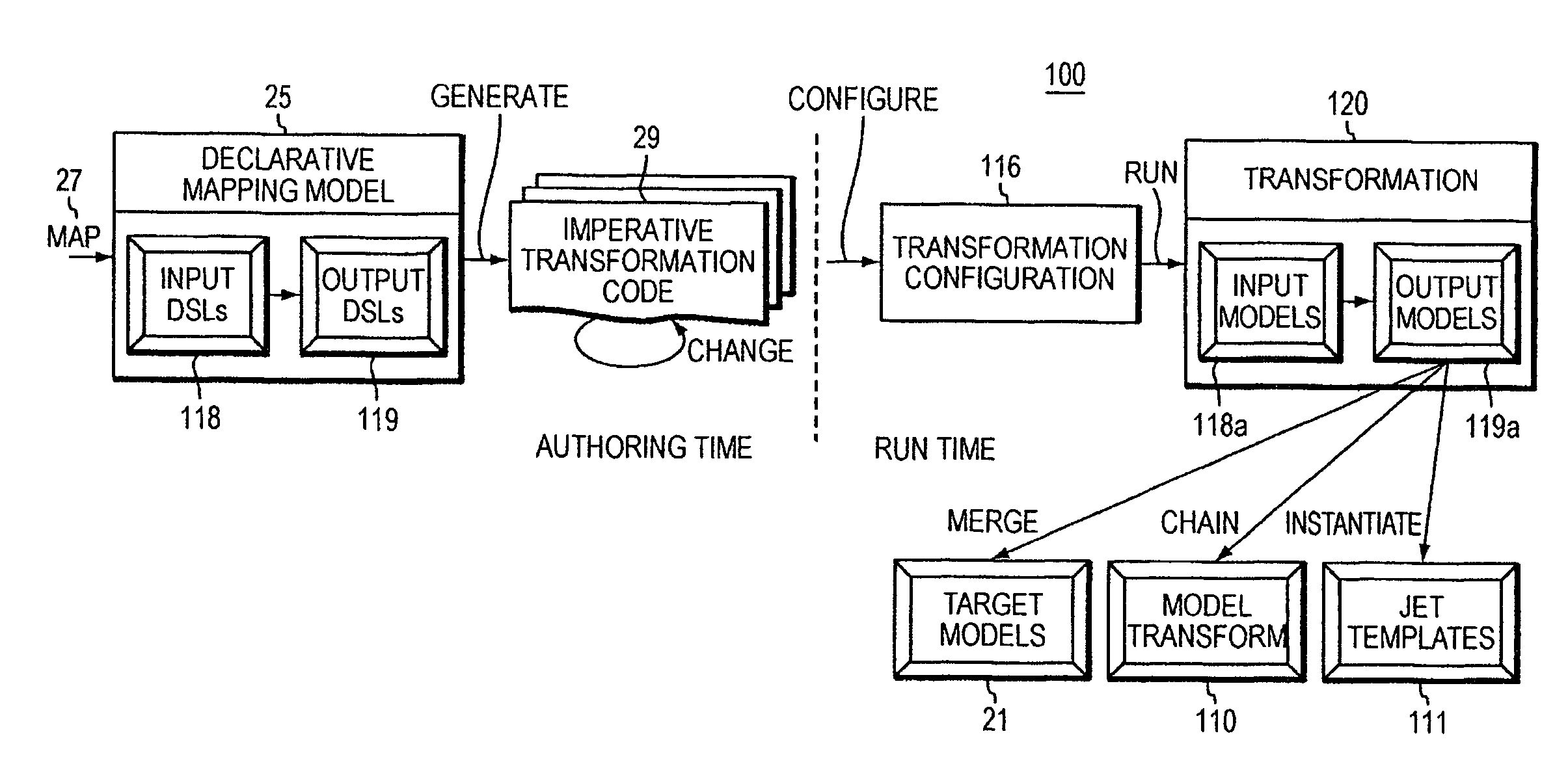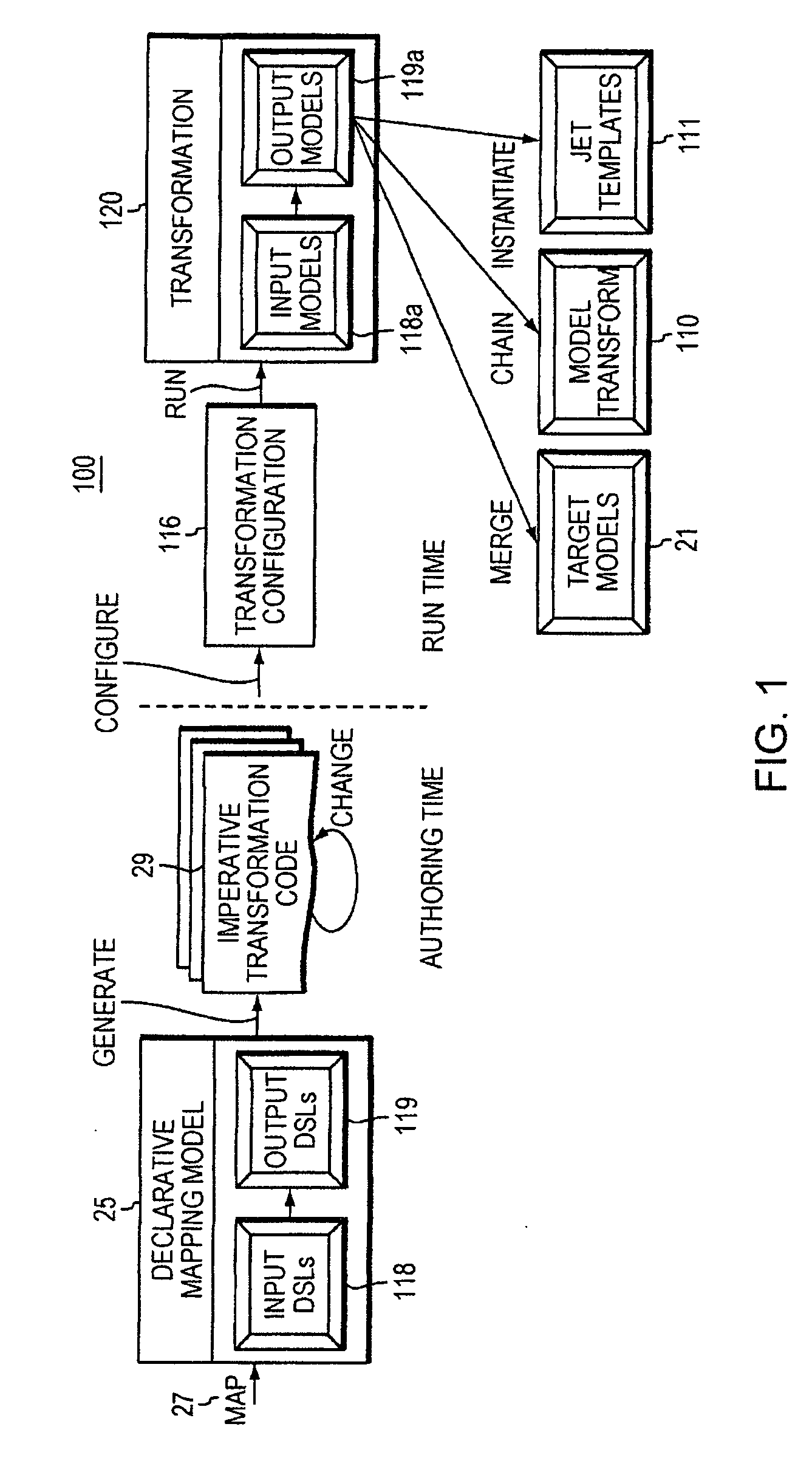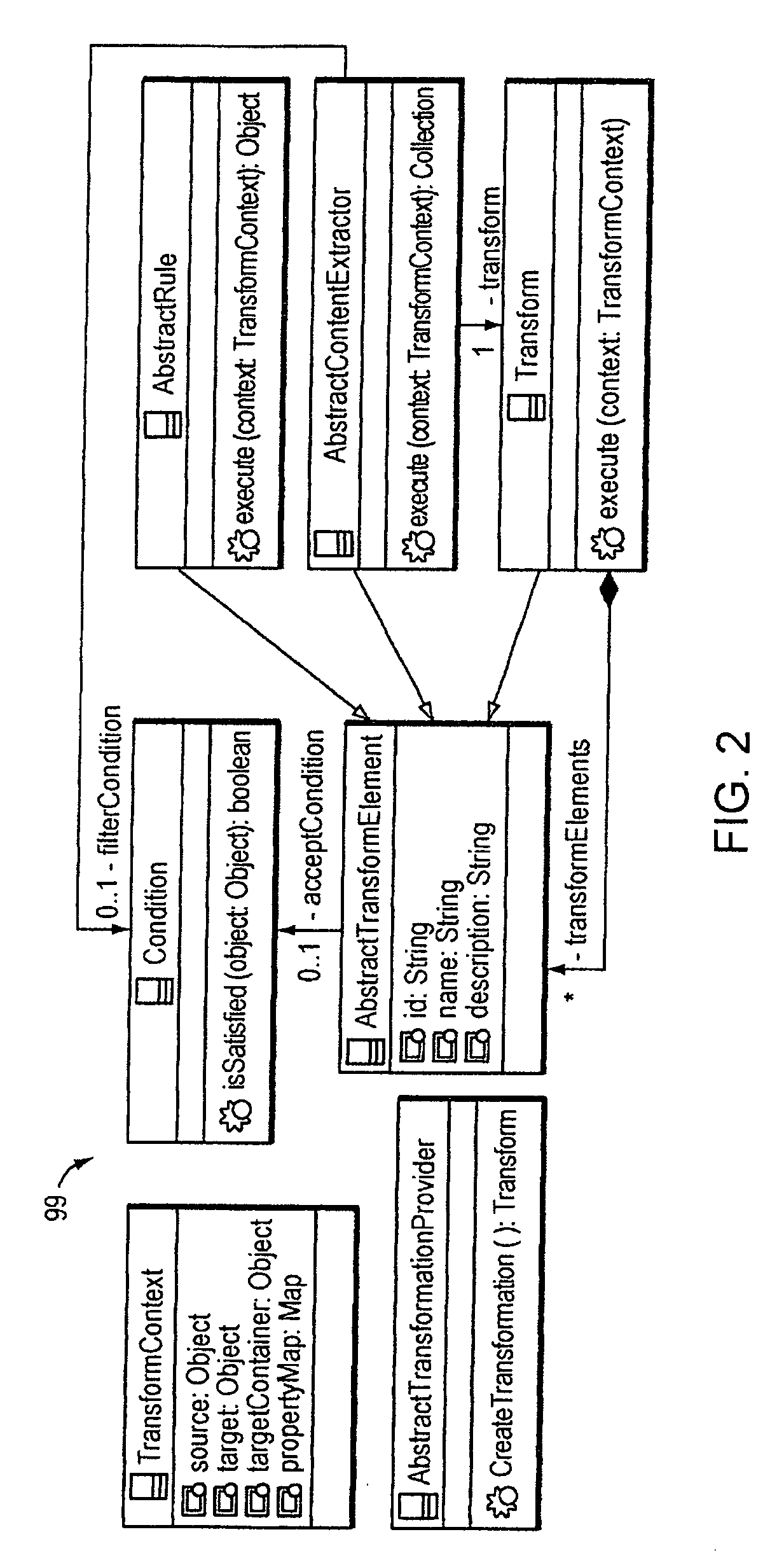Computer Method and Apparatus for Providing Model to Model Transformation Using an MDA Approach
a computer method and model technology, applied in the direction of source code generation, instruments, requirement analysis, etc., can solve the problems of source and target elements tracing, incremental updating of target models, and the inability to mix imperative with declarative transformation logi
- Summary
- Abstract
- Description
- Claims
- Application Information
AI Technical Summary
Benefits of technology
Problems solved by technology
Method used
Image
Examples
Embodiment Construction
[0034]A description of example embodiments of the invention follows.
[0035]Applicants have discovered that the MTAF framework provides the ability to author transformations between input and output Ecore-based DSLs. Further details on Ecore-based DSLs are in F. Budinsky, D. Steinberg, T. Grose, S. Brodsky and E. Merks, “Eclipse Modeling Framework,” Pearson Education, August 2003 herein incorporated by reference. The process of authoring and running such a transformation using MTAF according to the present invention is shown in FIG. 1. The authoring process is illustrated on the left hand side of FIG. 1, and run time is shown to the right of dashed vertical line. The first step in the authoring process is to map the input domain meta model and the output domain meta model DSLs 118, 119 using a declarative mapping DSL 27 provided by MTAF. The mapping DSL 27 is a refinement to the one provided in IBM Rational Software Architect Version 7.0 and is detailed below. The result of the first ...
PUM
 Login to View More
Login to View More Abstract
Description
Claims
Application Information
 Login to View More
Login to View More - R&D
- Intellectual Property
- Life Sciences
- Materials
- Tech Scout
- Unparalleled Data Quality
- Higher Quality Content
- 60% Fewer Hallucinations
Browse by: Latest US Patents, China's latest patents, Technical Efficacy Thesaurus, Application Domain, Technology Topic, Popular Technical Reports.
© 2025 PatSnap. All rights reserved.Legal|Privacy policy|Modern Slavery Act Transparency Statement|Sitemap|About US| Contact US: help@patsnap.com



